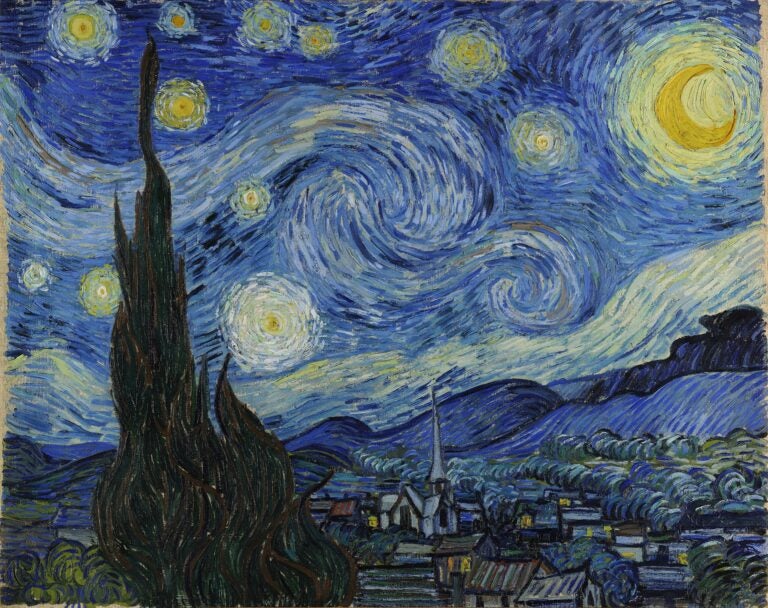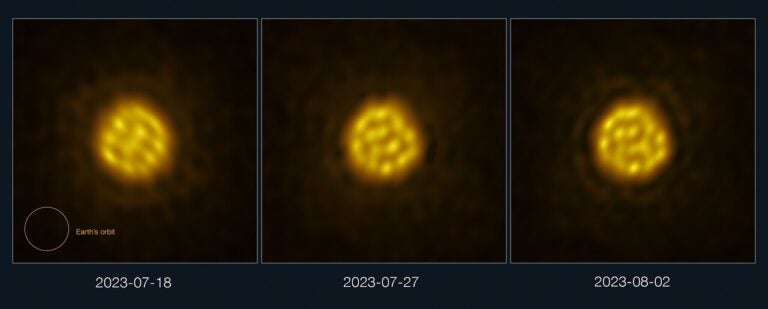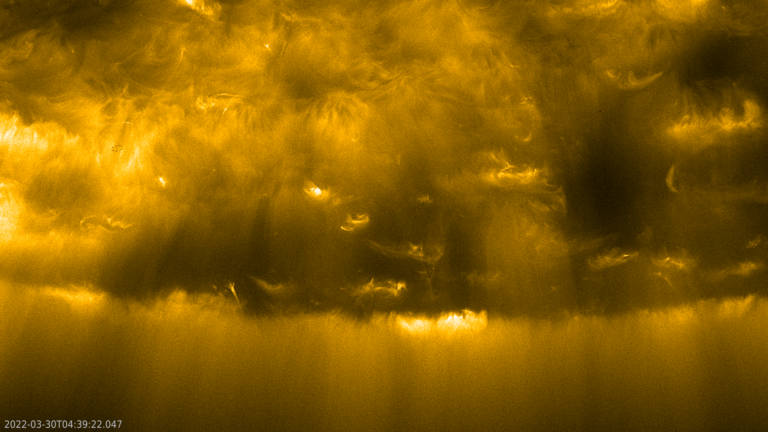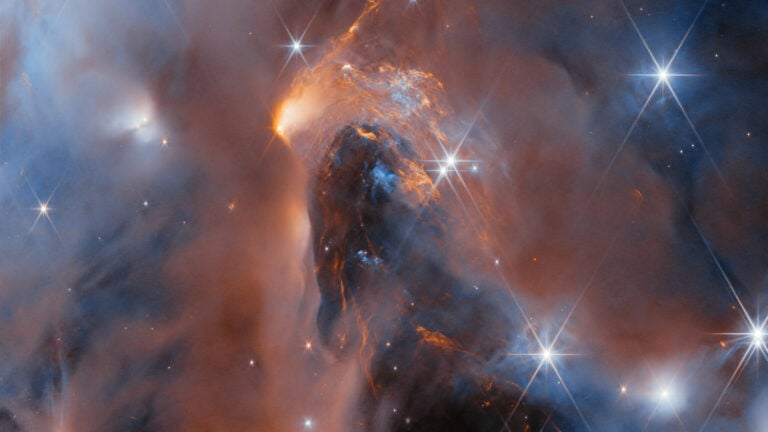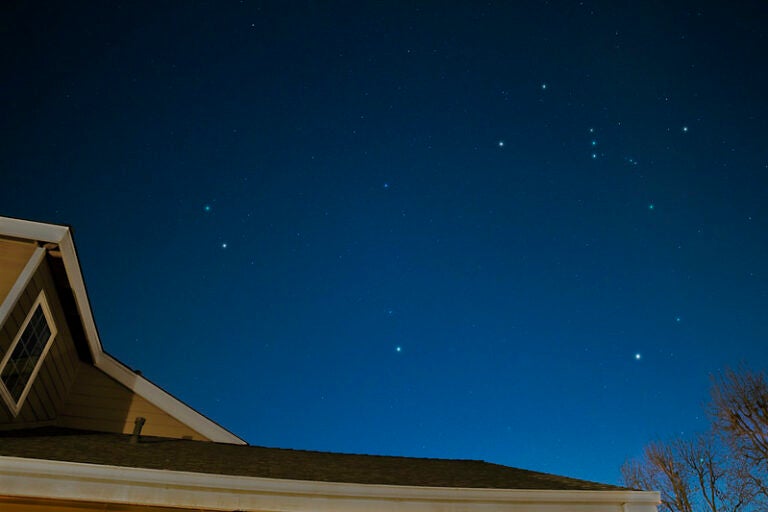In 2007, scientists saw that the magnetic field of Tau Boo flipped. Since then, the team has observed four reversals in polarity, confirming that the star has a rapid magnetic cycle of no more than two years — compared to 22 years for the Sun. “The Sun’s magnetic field is a bit like a giant bar magnet, with a north pole and south pole,” said team member Rim Fares of the University of St. Andrews in the United Kingdom. “Every 11 years, during solar maximum [the peak of sunspot activity], the Sun’s poles swap over. It takes two flips to restore the magnetic field to its original orientation, so the Sun’s magnetic cycle lasts 22 years. Tau Boo has the same magnetic behavior as the Sun, but its cycle is very fast compared to the solar one.”
This abrupt shift changes the environment surrounding the large exoplanet, and the reasons for Tau Boo’s fast cycle are still unclear.
Fares and her colleagues made the discovery while undertaking a mini-survey of 10 stars orbited by hot Jupiters, massive Jupiter-like planets that orbit very close to their star and experience scorching temperatures. The researchers compared the stars’ magnetic fields to those of stars without hot Jupiters. The study aimed to understand how the magnetic environment of stars affects the planets embedded within them and whether the planets themselves have an influence on the magnetic behavior of the star.
“A star’s magnetic field can have powerful effects on a planet, causing aurora and evaporation — at least partially — of the atmosphere. To understand these phenomena, we should understand the different interactions at play and how they affect both the planet and the star,” said Fares. “Unfortunately, observing the planets is a really challenging task, so we decided to study the magnetic fields of the stars that host hot Jupiters and see whether they were influenced by interactions with the planets.”
Even so, stellar magnetic fields can be small and hard to detect. Out of the sample of 10 stars, the team was only able to detect seven fields. Aside from Tau Boo, they had properties similar to stars without planets.
“For Tau Boo, tidal interactions between the star and the planet might be an important factor in accelerating the cycle, but we can’t be sure of the cause,” said Fares.
Tau Boo spins on its axis once every 3.3 days — the same amount of time as it takes the hot Jupiter to complete one orbit. One hypothesis for Tau Boo’s rapid cycle is that the planet makes it rotate faster than usual, and this is affecting the generation of the magnetic field.
“There are still some big questions about what’s causing Tau Boo’s rapid magnetic cycle,” said Fares. “From our survey, we can say that each planetary system is particular, that interactions affect stars and planets differently, and that they depend on the masses, distance, and other properties.”

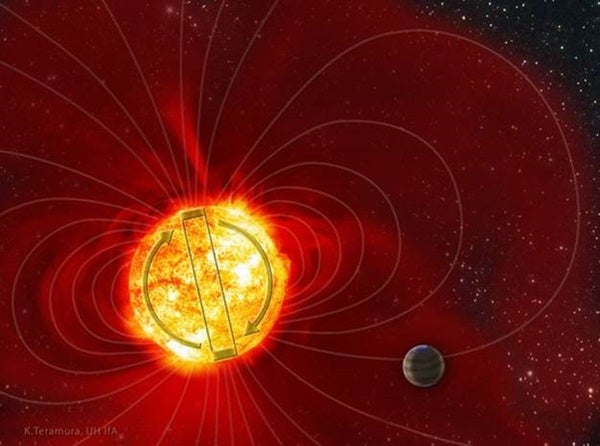

![Albireo (Beta [β] Cygni) is a classic example of a double star with contrasting colors.](https://www.astronomy.com/uploads/2024/08/Albireo.jpg)
